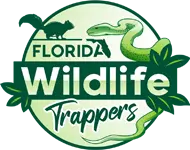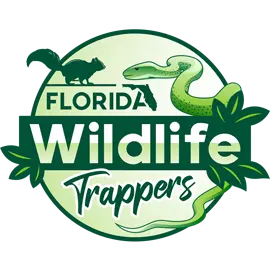Brahiminy Blindsnake
- Scientific Name
- Indotyphlops braminus
- Also Known As
- Bootlace Snake, Common Blind Snake
- Range
- Central and Southern Florida
- Diet
- Larvae, Eggs, Pupae
- Life Expectancy
- 3 - 5 Years
Photo 9448495 © Anny Peralta, CC BY-NC
Quick Links
The Brahiminy Blindsnake in Central Florida
The Brahiminy blindsnake (Indotyphlops braminus) is a small, secretive serpent that has become established in central Florida’s subtropical environment. Often confused with earthworms due to its tiny size and burrowing habits, the Brahiminy blindsnake has a number of unique physical and behavioral adaptations. This comprehensive guide provides detailed identification tips, biology facts, potential health risks, and prevention methods for the Brahiminy blindsnake in central Florida.
Read on to learn about this obscure underground reptile’s appearance, habits, ideal habitat conditions, diet, and professional control options if populations are impacting your property.
Appearance and Identification
The Brahiminy blindsnake has a number of distinctive features that set it apart from earthworms and other small snakes
The Brahiminy blindsnake’s small size, lack of limbs, and pointed tail help distinguish it from earthworms which have segmental bodies and no defined head. Probing suspected specimens with a stick causes defensive coiling.
Maturation Rate
Brahiminy blindsnakes grow rapidly, reaching adult size of 8-15 inches within their first year after hatching. They begin reproducing after 6-8 months once sexually mature. Their short generation time allows populations to expand quickly given plentiful food sources and habitat.
Habits and Behavior
The Brahiminy blindsnake spends its life underground, burrowing through loose soil and leaf litter. It is active year-round in central Florida’s warm climate. This species is most active at night or after heavy rains when the soil is moistened. Blindsnakes move by wedging their pointed tails into crevices and expanding their muscles in a looping, corkscrew motion to work through the substrate.
Blindsnakes seek out subterranean termite colonies, ant nests, and concentrations of insect larvae for food. Males seek out pheromone trails left by females to locate mates. When threatened, the blindsnake tightly coils its body and emits a foul-smelling musk from its cloaca for defense.
Reproduction and Lifespan
Mating occurs from March to November in central Florida. Males court females by aligning and intertwining their bodies. Females lay up to 12 elongated eggs which hatch after 1 to 2 months. Hatchlings emerge measuring 4 inches in length and reach maturity within their first year.
Brahiminy blindsnakes are oviparous with clutches of 4-12 eggs laid underground. This species is parthenogenic, meaning females can reproduce asexually without mating. Their average lifespan is estimated between 3-5 years. These adaptations enable prolific reproduction.
Ideal Habitat and Range
Central Florida’s humid, subtropical climate provides ideal habitat for the Brahiminy blindsnake. Average temperatures range from the 60s°F to over 90°F, rarely dipping below freezing. Annual rainfall exceeds 50 inches, especially during the summer wet season.
These warm, moist conditions allow dense ground vegetation like turfgrass and mulch beds to thrive across the region’s urban and suburban areas. The loose, organic soil facilitates the blindsnake’s burrowing lifestyle. Plentiful insects and arthropods dwelling in the substrate provide a reliable food source.
The extensive lawns, mulched plantings, and sandy soils around homes, parks, and gardens offer prime habitat. Their small size enables colonization through potted plants or soil transport. Diligent inspection of likely infestation sites is key to early detection and control of invasive blindsnake populations.
Diet and Feeding
The Brahiminy blindsnake feeds exclusively on small invertebrates, especially social insects and their larvae. Their main prey includes:
- Ants – Favorite food source. It feeds on eggs, larvae, and adult ants.
- Termites – Invades underground termite colonies.
- Fly larvae – Maggots provide high-fat nutrition.
- Crickets – Also feed on nymphs and eggs.
- Beetles – Adults and larvae.
- Worms – Particularly earthworm eggs.
Blindsnakes locate prey through chemical cues like ant pheromone trails. They consume insects and larvae whole. Stomach acids rapidly dissolve the chitinous exoskeletons. Blindsnakes require very little food due to their small size and slow metabolism.

Photo 173764446 © Eric C. Maxwell, CC BY-ND

Common Health Risks
The Brahiminy blindsnake is not venomous and poses minimal health risks to humans or pets. Their small mouth makes biting unlikely. Heavy infestations in potted plants may potentially spread parasitic nematode worms. Blindsnakes help control pest insects but overpopulations could impact beneficial garden species. Seek professional pest control to eliminate heavy blindsnake infestations.
Preventing Brahiminy Blindsnakes
The Brahiminy blindsnake is not venomous and poses minimal health risks to humans or pets. Their small mouth makes biting unlikely. Heavy infestations in potted plants may potentially spread parasitic nematode worms. Blindsnakes help control pest insects but overpopulations could impact beneficial garden species. Seek professional pest control to eliminate heavy blindsnake infestations.
Brahiminy Blindsnake in Central Florida – Conclusion
The Brahiminy blindsnake is a thriving invasive species in central Florida’s warm, moist urban and suburban areas. While mainly beneficial for insect control, overpopulation can become problematic in gardens and potted plants. Look for signs like small snake-like forms in upturned soil and potting medium. Combining preventive measures, early monitoring, and professional control when found can check the spread and overgrowth of Brahiminy blindsnake populations where problematic. With vigilance and integrated pest management, the obscure Brahiminy blindsnake can be kept in balance within central Florida’s subtropical environment.






